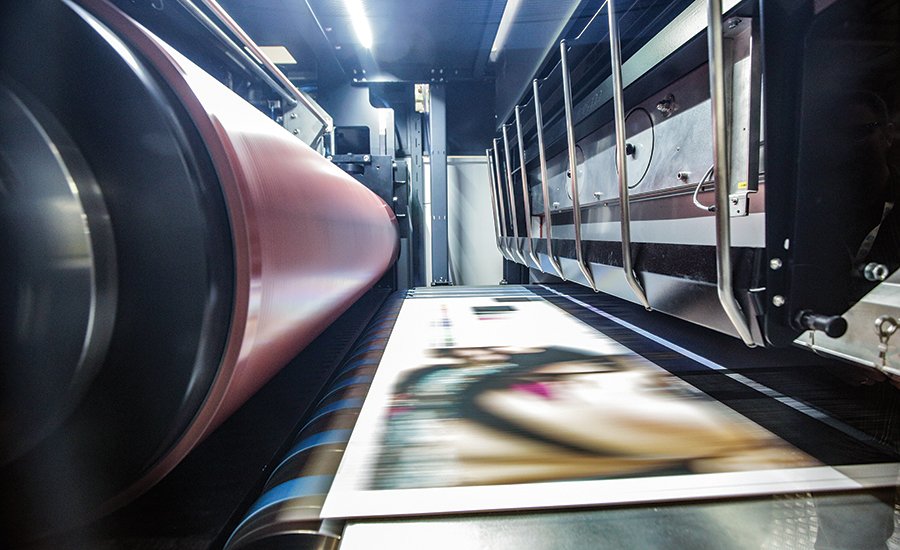Introduction
In the rapidly evolving world of print production, the digital prepress revolution has emerged as a game-changer. Traditional print methods are giving way to more efficient and eco-friendly digital processes. Embracing this revolution not only enhances print quality but also improves turnaround times, reduces costs, and opens up new creative possibilities. In this article, we will delve into the intricacies of the digital prepress revolution and explore the various ways it is reshaping the future of print production.
The Future of Print Production: Embracing the Digital Prepress Revolution
Digital prepress technology has revolutionized the print production landscape, transforming how print materials are designed, prepared, and produced. Here, we’ll explore the key aspects of this revolution and its implications for the future of print.
1. Understanding Digital Prepress
Digital prepress is the process of preparing digital files for printing. It involves tasks such as file optimization, color management, imposition, and proofing. Unlike traditional prepress methods that relied on film negatives, digital prepress utilizes software applications to streamline the workflow and enhance precision.
2. Benefits of Digital Prepress
Digital prepress offers numerous advantages over conventional methods. Some key benefits include:
- Enhanced Efficiency: Digital prepress eliminates the need for physical film and manual adjustments, significantly speeding up the production process.
- Cost Savings: With reduced material waste and shorter production times, digital prepress can lead to cost savings for both print service providers and clients.
- Greater Flexibility: Digital files can be easily edited and updated, allowing for quick last-minute changes and personalization.
- Improved Quality: The digital workflow ensures consistent and high-quality results, minimizing variations between prints.
3. Impact on Printing Technologies
The digital prepress revolution has had a profound impact on various printing technologies:
- Offset Printing: Traditional offset printing has evolved with the integration of digital prepress, enabling sharper images and more precise color reproduction.
- Digital Printing: Digital prepress is at the core of digital printing technologies, empowering on-demand printing and variable data capabilities.
- Wide-Format Printing: Wide-format printers have embraced digital prepress to optimize large-scale printing and deliver stunning graphics.
4. Advancements in Color Management
Color management plays a pivotal role in print production. Digital prepress has introduced sophisticated color profiling and calibration techniques, ensuring accurate and consistent color reproduction across different devices and substrates.
5. Environmentally Sustainable Printing
As businesses increasingly focus on sustainability, digital prepress contributes to eco-friendly print production. By minimizing material waste and energy consumption, this revolution aligns with environmentally conscious practices.
6. Integrating Variable Data Printing (VDP)
Digital prepress facilitates Variable Data Printing (VDP), allowing marketers to personalize printed materials with targeted content. This level of customization enhances engagement and response rates.
7. Addressing Print Security
With the growing concern over print security, digital prepress offers advanced encryption and authentication measures, safeguarding sensitive information.
8. Role of Automation in Prepress
Automation is becoming a critical aspect of digital prepress. Automated workflows streamline processes, reduce errors, and optimize resource allocation.
9. Optimizing Prepress for Packaging
In the packaging industry, digital prepress revolutionizes the design and production of packaging materials, enabling better prototyping and shorter time-to-market.
10. Collaboration and Cloud-based Solutions
Digital prepress fosters seamless collaboration among designers, clients, and print service providers through cloud-based solutions, ensuring efficient project management.
11. Evolving Role of Prepress Operators
The advent of digital prepress has led to a shift in the roles of prepress operators. They now need to be proficient in software applications and digital workflows.
12. Bridging the Gap Between Design and Print
Digital prepress bridges the gap between design and print, allowing designers to visualize the final output accurately and make necessary adjustments.
13. Exploring 3D Printing in Prepress
As 3D printing gains momentum, its integration with digital prepress holds the potential to revolutionize product prototyping and manufacturing.
14. The Rise of Augmented Reality (AR) in Print
Digital prepress is paving the way for incorporating AR elements into print materials, creating interactive and immersive experiences for readers.
15. Enhanced Prepress for Textile Printing
In the textile industry, digital prepress streamlines the design-to-print process, enabling faster turnaround and better color management for fabrics.
16. Digital Prepress and Cross-Media Marketing
Digital prepress plays a vital role in cross-media marketing campaigns, ensuring seamless integration between print and digital channels.
17. Addressing Challenges and Limitations
While digital prepress offers numerous benefits, there are challenges to consider, such as the initial investment in technology and the learning curve for traditional print operators.
18. The Future of Digital Prepress
The future of print production is undeniably tied to digital prepress advancements. As technology continues to evolve, we can expect even greater efficiency, personalization, and sustainability in the print industry.
19. Embracing Change in Print Production
Adopting digital prepress is not just a choice; it’s a necessity for print businesses looking to thrive in the dynamic market.
20. The Impact on Graphic Design
Graphic designers are embracing digital prepress tools to push the boundaries of creativity and design compelling print materials.
21. Leveraging Big Data in Prepress
The integration of big data analytics in digital prepress enables data-driven decision-making, leading to more effective print campaigns.
22. Empowering Small and Medium-sized Businesses
Digital prepress levels the playing field for smaller businesses, allowing them to access high-quality print production at affordable costs.
23. Training and Education in Digital Prepress
With the transition to digital prepress, industry professionals need comprehensive training to maximize its potential fully.
24. Innovations in Print Finishing
The digital prepress revolution is influencing print finishing technologies, enhancing embellishments, coatings, and binding techniques.
25. Collaboration with Print Service Providers
Collaborating with knowledgeable print service providers becomes vital for clients seeking the best results from digital prepress technologies.
FAQs (Frequently Asked Questions)
- What is digital prepress, and how does it differ from traditional prepress methods?
Digital prepress involves preparing digital files for printing using software applications, while traditional prepress relied on physical film negatives and manual adjustments.
- How does digital prepress contribute to sustainable printing practices?
Digital prepress minimizes material waste and energy consumption, aligning with eco-friendly print production.
- What are the benefits of Variable Data Printing (VDP) in digital prepress?
Variable Data Printing allows personalized content, enhancing engagement and response rates in printed materials.







